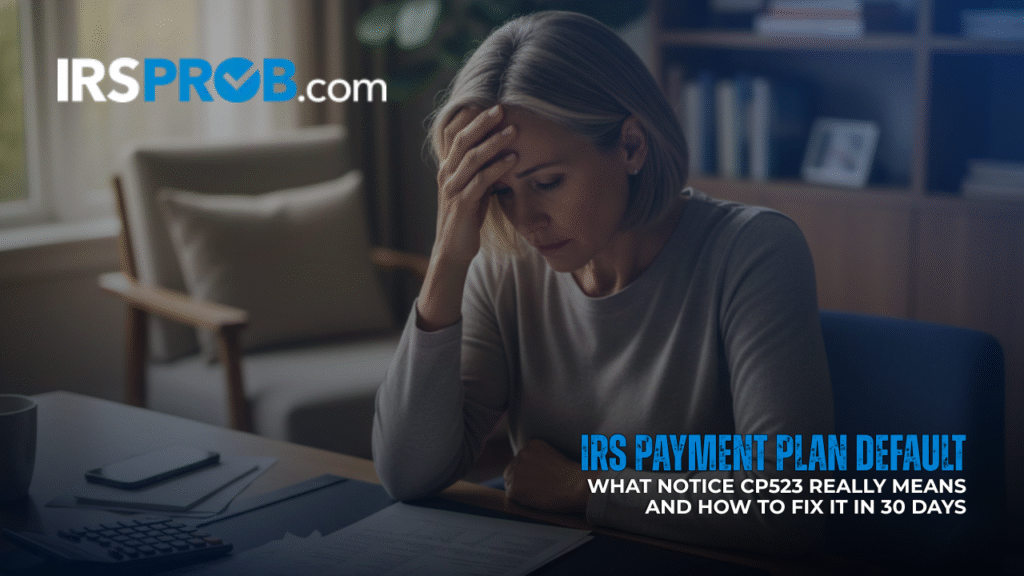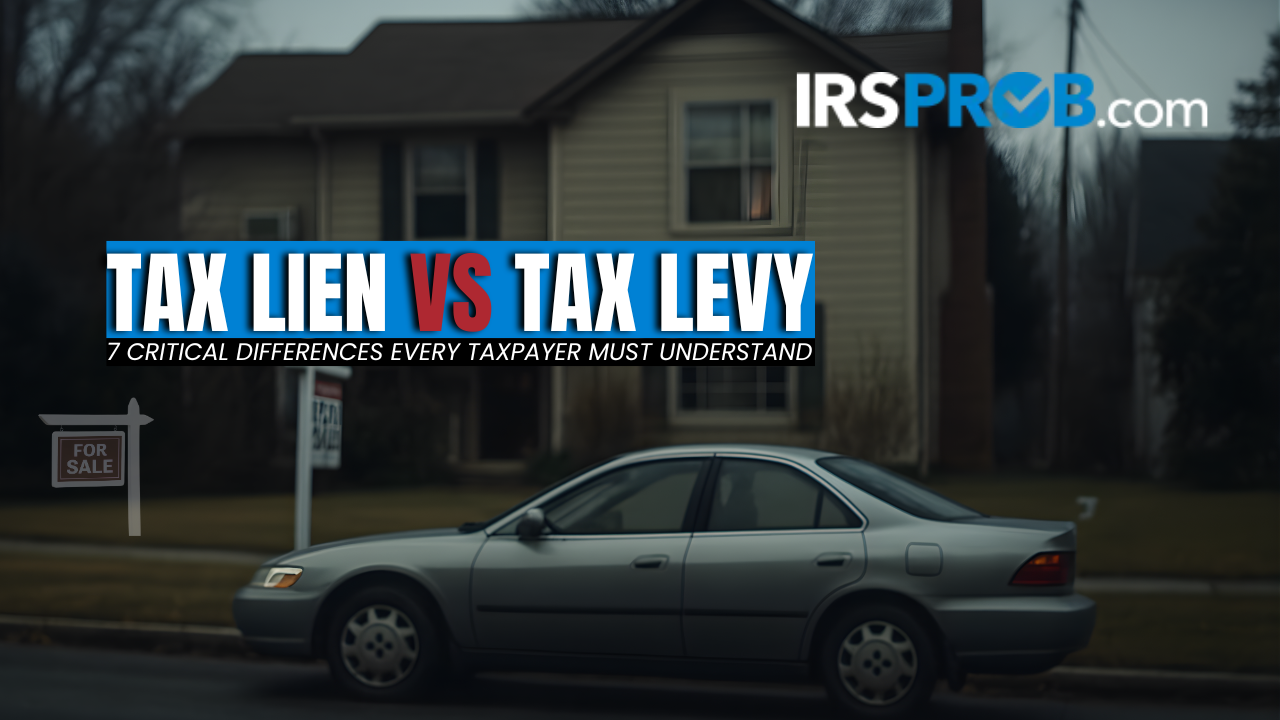
You set up monthly payments and finally felt your tax debt shift from overwhelming to manageable. Then real life happened. Maybe a medical bill popped up, the car needed work, or a job ended. One payment slipped, then another. Now Notice CP523 is in your hands and your stomach drops.
Take a breath. An IRS payment plan default is serious, but you still have options if you move quickly and stay organized.
What an IRS Payment Plan Default Actually Is
An IRS payment plan default is an occurrence when the terms of your installment agreement are not satisfied. That can mean missing payments, failing to file required returns, or adding new unpaid taxes while your plan is active. The IRS then sends Notice CP523 to tell you it intends to end your agreement and may use collection tools if you do not respond.
The key idea is simple. You entered a contract with the IRS. They expect you to follow every term. When something breaks, the agreement is at risk. The sooner you address it, the better your chances of keeping or restoring your plan.
Why the 30-Day Window Matters
Days to fix your payment plan default
Notice CP523 gives you a short period, usually about 30 days from the date on the letter, to fix the problem. During this time you can catch up on missed payments, request a change to the plan, or ask for an appeal if you disagree with the action.
This window is your opportunity to act before the IRS moves to stronger collection measures. Many people lose this chance because they are scared to open the mail. Do not wait. The letter is your path to a solution.
The Real Cost of an IRS Payment Plan Default
Interest and penalties keep growing until the balance is paid. The IRS sets interest quarterly. It compounds daily and can add up faster than you expect. There is also a monthly failure to pay penalty. If a plan is active and in good standing, that penalty is usually lower. If a levy notice is involved, it can be higher.
Example: If you owe $20,000 and do nothing for a year, the combination of interest and penalties can easily add a few thousand dollars to your balance. That is money you would rather keep. The takeaway is clear. Waiting is expensive.
What Can Happen If You Ignore an IRS Payment Plan Default
Immediate Balance Due
Once the agreement ends, the IRS can collect the full amount right away.
Bank Levy
The IRS can take funds from your bank accounts. That can mean bounced bills and serious stress.
Wage Garnishment
A portion of your paycheck can go straight to the IRS before you see it.
Federal Tax Lien
A lien is a legal claim on your property. It can hurt your credit and make it harder to borrow or sell.
Property Seizure
In rare but serious situations, the IRS can seize assets to pay the debt.
Passport Issues
Debts over the current seriously delinquent threshold can lead to passport denial or revocation.
How to Recover from an IRS Payment Plan Default
Act Within the 30-Day Clock
Call the number on your notice or follow the instructions right away. Acting within the timeline keeps more doors open.
Reinstate or Revise Online When Possible
Use the IRS Online Payment Agreement tool to reinstate after default or to change payment date and amount. You can also switch to direct debit so payments pull automatically.
File Any Missing Returns and Stay Current
A plan can default if you do not file on time or if you add new unpaid taxes. File everything that is due and pay current year taxes as you go.
If the Payment No Longer Fits, Ask for a Review
If income dropped or expenses increased, request a new evaluation. Be ready with proof such as pay stubs, bank statements, medical bills, or other documents that show real hardship.
Use Your Appeal Rights When You Disagree
If you get a proposed termination and you believe it is wrong, you can appeal within the stated time frame. A timely appeal can pause levy action while your case is reviewed.
If You Cannot Pay at All, Request Hardship Relief
If paying would keep you from covering basic living costs, ask about Currently Not Collectible status. The debt does not go away, but enforced collection can pause while you qualify.
Consider an Offer in Compromise When It Fits
If full payment is not possible and your financials meet strict rules, you can apply to settle for less than you owe. The IRS has a pre-qualifier tool that helps you see if an Offer in Compromise is worth pursuing.
How to Avoid Another IRS Payment Plan Default
- Automate payments with direct debit so you do not have to remember each month.
- Adjust withholding or estimated tax so you do not create new balances while on the plan.
- Build a small emergency buffer so a surprise bill does not derail your next installment.
- Open every IRS letter and respond quickly. Many letters open short appeal or modification windows.
- Do a quick money check before big life changes such as a job transition or a major expense.
Quick Reference for Rates and Fees
- Interest is set by the IRS each quarter and compounds daily. Always check the current rate before you make decisions.
- Failure to pay penalties continue until the balance is paid. The rate can be lower while an installment agreement is in good standing and higher after certain levy notices.
- Fees may apply if you revise or reinstate a plan. Some taxpayers qualify for reduced fees based on income.

Conclusion and Next Step
If you are facing an IRS payment plan default, do not wait. Use the next 30 days to get back on track. Reinstate or revise the plan online if you can. Document hardship when that applies. File anything that is missing and stay current going forward.
If the situation is complex or you are overwhelmed, bring in a qualified tax professional who deals with the IRS every day.
You were approved for a payment plan because the IRS would rather receive steady payments than escalate to levies and liens. Use that to your advantage. Take one clear step today and keep the momentum tomorrow. Your financial future will be better for it.
Get Payment Plan Help Now





